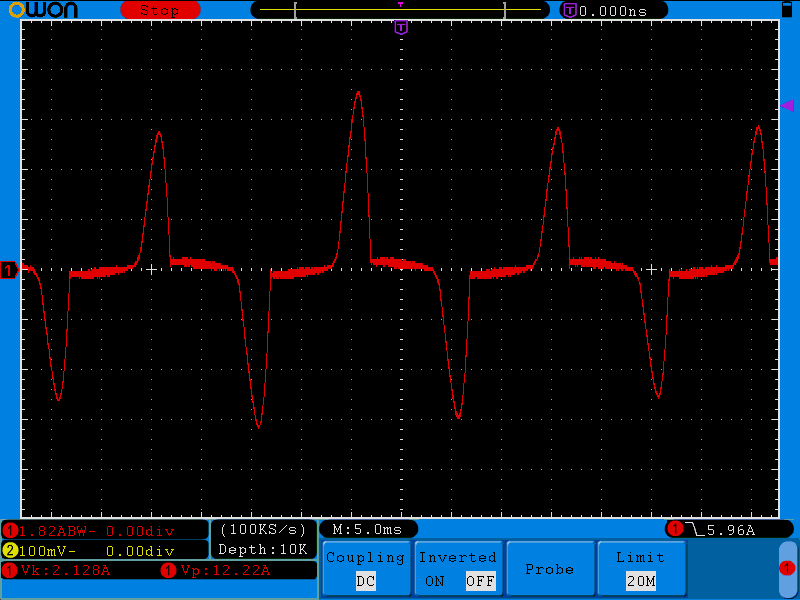In that case, I wouldn’t worry about your c.t.
To show you the sorts of waveshapes that are possible, here’s a very spiky current waveform (Washing machine brushless d.c. motor on spin by @dBC Phase measurement and correction in IoTaWatt - #17 by dBC)
And there’s a picture of a most distorted channel made up of a “boat load” of CFLs here
The importance of continuous sampling - #5 by dBC
